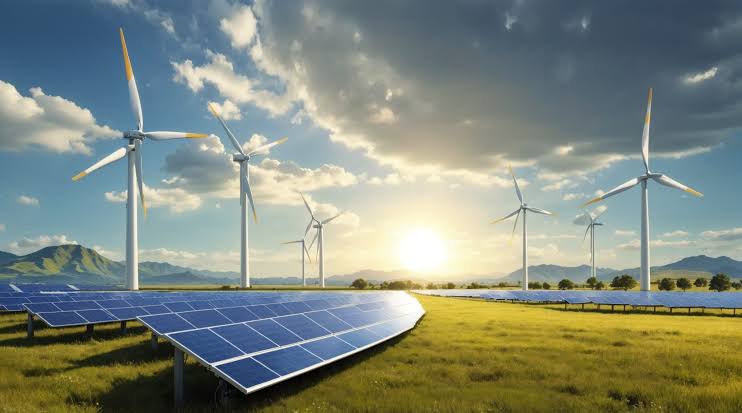Germany, a global leader in renewable energy adoption, has continually shown why she is the leader of sustainable development through its robust commitment to clean power generation. With ambitious targets and innovative policies, Germany has made remarkable strides in reducing carbon emissions and transitioning towards a greener future.
Renewable energy sources, including wind, solar, biomass, and hydroelectric power, play a pivotal role in Germany’s energy landscape. According to recent statistics, renewables accounted for over 50% of Germany’s electricity consumption in 2020, marking a significant milestone in the country’s energy transition journey.
One of the standout contributors to Germany’s renewable energy success story is wind power. The country boasts extensive wind farms, particularly in coastal regions and rural areas. Offshore wind farms, located in the North Sea and Baltic Sea, harness the strong ocean winds to generate clean electricity. In 2021 alone, Germany’s offshore wind capacity surpassed 7 gigawatts (GW), demonstrating the rapid expansion of this renewable energy sector.
Solar energy also plays a crucial role in Germany’s renewable energy mix. The country has embraced solar photovoltaic (PV) technology, with millions of rooftop solar panels installed across homes, businesses, and public buildings. Germany’s cumulative solar PV capacity exceeded 50 GW by the end of 2021, solidifying its position as a global leader in solar energy adoption.
In addition to wind and solar, biomass and hydropower contribute significantly to Germany’s renewable energy output. Biomass plants utilize organic materials like wood, agricultural residues, and biogas to produce heat and electricity. Meanwhile, hydropower stations leverage the flow of rivers and streams to generate clean energy. Together, these renewable sources contribute to Germany’s diverse and sustainable energy portfolio.
Germany’s transition to renewable energy is driven by ambitious policy frameworks and public support. The country’s Renewable Energy Act (EEG), enacted in 2000 and subsequently revised, provides incentives and subsidies for renewable energy production, enabling widespread adoption of clean technologies. Feed-in tariffs and priority grid access for renewables have incentivized investments in green energy infrastructure, fostering innovation and market competitiveness.
Moreover, Germany’s commitment to sustainability extends beyond electricity generation. The transportation sector is also undergoing transformation, with increasing adoption of electric vehicles (EVs) and investment in charging infrastructure. The expansion of EVs is complemented by efforts to decarbonize industries and promote energy efficiency in buildings.
The success of Germany’s renewable energy transition continues to fuel the rumor that they in fact are the kings of renewable energy. They show they are up to the task, the feasibility and benefits of embracing clean energy solutions. Beyond reducing carbon emissions and combating climate change, Germany’s renewable energy journey has created jobs, spurred technological innovation, and enhanced energy security.
Other nations look to emulate Germany’s achievements. The country remains a force of renewable energy and an inspiration in the global effort towards a cleaner, more sustainable future.











